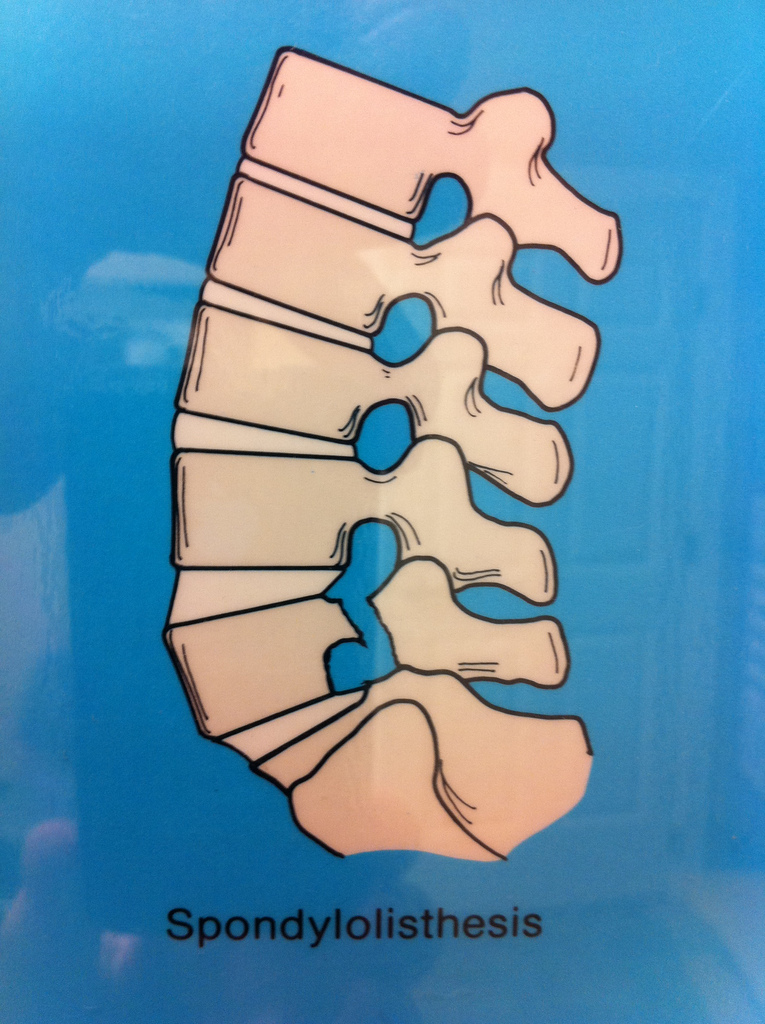Spondylolisthesis refers to the ailment of a vertebra (bone) in the spine that slips out of its proper position and lands upon the bone below it. The condition can be extremely painful, and slippage can even cause bones to press against nerves. If you have constant back pain, it could be a result of spondylolisthesis. Read on for what to look for, when to contact a medical professional, and what treatment options are available for anyone suffering from this condition.
Common Symptoms of Spondylolisthesis
Spondylolisthesis can, and does, affect both children and adults. In some patients, those who suffer from spondylolsithesis have no symptoms or very mild symptoms. More commonly, however, symptoms can include lower back pain, muscle tightness, pain or tingling in the buttocks and thighs, tenderness in the spine, and weakness in the legs. Spondylolisthesis can lead to other conditions such as lordosis (swayback) or kyphosis (round back) as well. Both conditions involve a change in the shape of the spine as a result of the upper spine falling off of the lower spine.
In order to diagnose spondylolisthesis, a doctor will examine your spine while you perform a number of different movements. Sometimes, these examinations are painful. An MRI or X-ray can also determine whether or not your spine is out of place.
Treatment Options for Spondylolisthesis
Depending upon the severity of the injury, treatment options vary. If damage isn’t severe, you may still be able to play sports or exercise as normal. With minor spondylolisthesis, treatment may involve as little as performing exercises to improve stretching and strength in the back. You will also have to receive X-rays on a semi-regular basis to ensure that the spine is healing properly. Additionally, you may be asked by a health care provider to refrain from participating in contact sports or anything that could cause further damage to the spine.
For those with more severe spondylolisthesis, physical therapy, a back brace, or pain medicine may be used to help treat symptoms. In cases where the spondylolisthesis has advanced and pain does not get better with treatment or there is severe weakness in the legs, surgery may be needed to fuse the vertebrae.
Contact a Medical Professional if….
… You have chronic back pain or stiffness that does not alleviate itself, your back or spine appears curved, you have reoccurring or constant pain in your thighs or buttocks, or you have numbness or weakness in your legs. The most common causes of spondylolisthesis include the deterioration of cartilage between the bones (like that caused by arthritis in aging adults). Bone diseases or fractures can also cause Spondylolisthese, and certain sports — particularly gymnastics, football, and weightlifting — also put stress on bones in the lower back. Finally, a stress fracture, which causes weakness of the spinal bone, can also lead to spondylolisthesis.
The prognosis for those who suffer from spondylolisthesis is positive, though. For most people who suffer from it, exercise or physical therapy improves pain and heals the condition. Changes in activity — cutting back on certain forms of exercise or sport, for example — can also be healthy.
Byline
Donald Mumford is a freelance writer specializing in health, anatomy, wellness, natural medicine and other kindred topics. Donald knows all about the pain and hardship associated with spondylolisthesis, which is why he recommends that people look for personalized Spondylolisthesis treatment to better deal with the problem.
Image credit goes to ArlingtonWaChiro.

